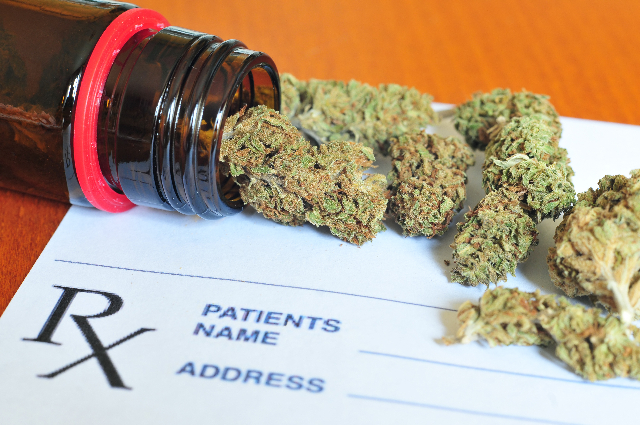Cleanliness, security top-notch at pot grow, production facilities near Strip

Walking into Evergreen Organix’s 33,000-square-foot warehouse just west of the Strip feels like something out of a sci-fi movie.
In a small entry room bordered by security doors, you’re asked to take off your shoes and slip into gleaming white Crocs.
Starting this weekend, when the first live marijuana plants were expected to arrive, all employees and visitors will have to then step into a locker room, take a shower and put on black scrubs.
The company has spent $9 million getting legal approvals to grow medical marijuana here and turning the building into a “clean facility,” down to antimicrobial walls and paint.
The aim is to keep contaminants out as much as possible, lessening the need to use pesticides or fungicides on the plants.
“For me, everything’s always lab clean, sterile,” consultant Kurt Barrick said Friday while touring the building his company designed.
Evergreen, which officially opens Monday, could produce 100 pounds of marijuana a month once it’s in full swing, operations manager Jillian Nelson said.
Next door in the same building is the company’s 4,700-square-foot “production” facility, which includes a restaurant-style kitchen. It will make edible and infused marijuana products, including not only the expected — cookies and brownies — but high-end sweets such as gourmet chocolates.
Marijuana grown hydroponically
Evergreen becomes the 10th cultivation facility in Clark County given approval to open by state health officials, according to the latest available tally. It expects to be the first approved to make edible and infused products.
The marijuana will be grown hydroponically, meaning with nutrients and water, but no soil.
Plants will spend most of their time in four “flowering rooms,” where they sit in 1,936 separate containers. The 13-gallon containers, which sit in clusters of 32, look like rows of small trash cans.
The biggest flowering room — long, narrow and 9,000 square feet — can hold 864 plants.
Pipes snake around the floors, and employees called horticultural technicians can control factors including water temperature and the levels of carbon dioxide and nutrients each cluster gets.
Before going to the flowering rooms, plants will spend a few weeks in “vegetative growth,” developing their roots in flat gray containers stacked in two levels on rows of metal racks nicknamed “bunk beds.”
After harvesting, the plants will be dried, cured, trimmed and weighed in another room. Each step of the process takes place in its own climate-controlled section of the building.
Modern technology used
Barrick and his Las Vegas-based company, VonDank, outfitted the grow facility with modern technology.
“Dual end” high-pressure sodium lights cut the energy use in half, which means less need for air conditioning to combat the heat put off by the lights. A reverse osmosis water system wastes far less water than comparable models.
The building even has a small second-floor “R&D room,” where staff can experiment to see what nutrients, temperatures and carbon dioxide levels work for different strains.
“We’re very data driven,” Barrick said.
As with any marijuana business, security is heavy. The walls are thick reinforced concrete. There are security doors everywhere and 110 cameras. Some rooms require a PIN as well as an ID card swipe to enter.
Because the two businesses have two separate licenses, most employees can enter only one side or the other. Only managers have security cards that get them in both sides.
On the “production side,” a carbon dioxide extraction system can ensure final products with exactly the desired level of THC, the psychoactive chemical in marijuana, or other components.
Legally, Evergreen can’t call its products organic — that’s a label approved by the U.S. Department of Agriculture, and marijuana is persona non grata to the federal government.
But the company plans to use only organic ingredients, buying food such as eggs and honey from small farms. Staff including a French-trained chocolatier will produce creations familiar and not: chocolate chip cookies, yes, but also an avocado-garbanzo bean cookie. (They swear it’s really good.)
All the “clean” technology came at a cost. But Nelson, the operations manager, said it will be worth it.
The plants, after all, are being grown for medical marijuana patients. And a lot of sick people, especially those with compromised immune systems, don’t want any more added chemicals in their body, Nelson said.
Contact Eric Hartley at ehartley@reviewjournal.com or 702-550-9229. Find him on Twitter: @ethartley